Exploding CG aliens are fun to watch, and fun to make - just look at the recent Sparkypants Studios Dropzone trailer by RealtimeUK, in which a legion of mech pilots take aim against a hive of alien creatures. The trailer also features significant amounts of facial animation and vast rendered environments.
“Here at the studio our ethos is to work collaboratively with our clients and respect their established brand and design requirements while elevating it to a more visceral cinematic level,” says art director Stuart Bayley. “So for the final look and feel of the trailer we wanted to take the silhouettes and general design aesthetic apparent in the game and add plausible real world details and shader work.”
“Having Houdini on this job allowed us to take advantage of its powerful soft body tools, volume tools and particle and pyro FX. This helped us push the quality and increase the detail of our FX to a higher level. We are always trying to create bigger and better FX, and Houdini helps us achieve this.”
Graham Collier // Lead VFX ArtistHere’s how RealtimeUK drew on its already large body of work in narrative design, character animation and effects sims to make the Dropzone trailer possible.
Going For Goo
The exploding alien shots don’t come until the end of the trailer, but when they do they have immediate impact, with varying amounts of organic goo splashed around. In order to realise this kind of demise, RealtimeUK looked to Houdini’s Finite Elements solver for a ‘soft body’ approach.
“We loved the organic results we were getting,” says lead VFX artist Graham Collier. “So we started off by testing the Fractured Solid Object FEM tools. We got some very nice results from this so we exported the animated alien meshes into Houdini.”

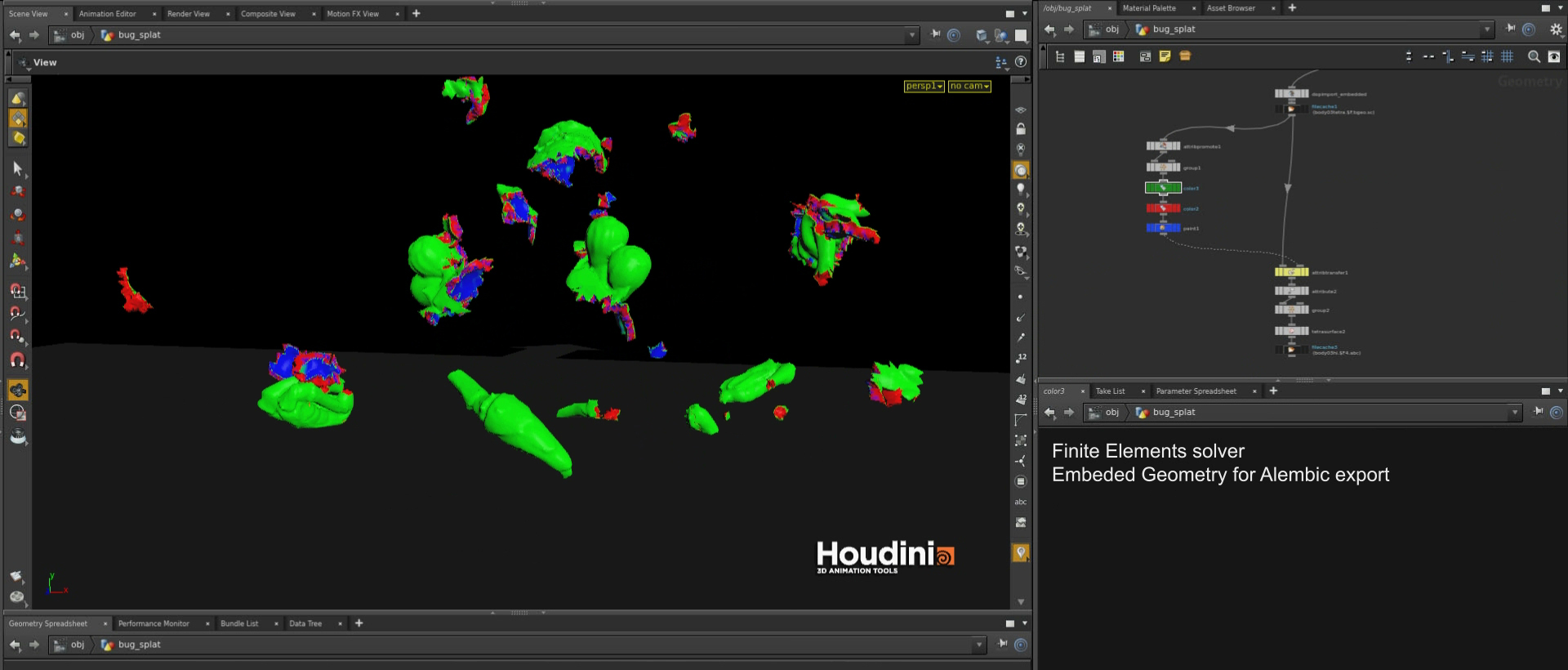
“We couldn't use the mesh because FEM needs a mesh without any intersecting polygons,” continues Collier. “To get around this we converted the mesh into a VDB volume and then back to a polygon shell that we could use with the solver. We also transferred UVs and velocities from the original mesh as we would need them later.”
The next step in obliterating the aliens was to tetrahedralise the mesh, a requirement for soft body sims in Houdini. Artists then used the solid embed tool to simplify the tetrahedron mesh, reducing the tetrahedrons from 1.5m to around 11K. “This greatly sped up our simulation times,” notes senior generalist and VFX TD Adrian Vickers. “The hi-res mesh would then be embedded into the final simulation.”
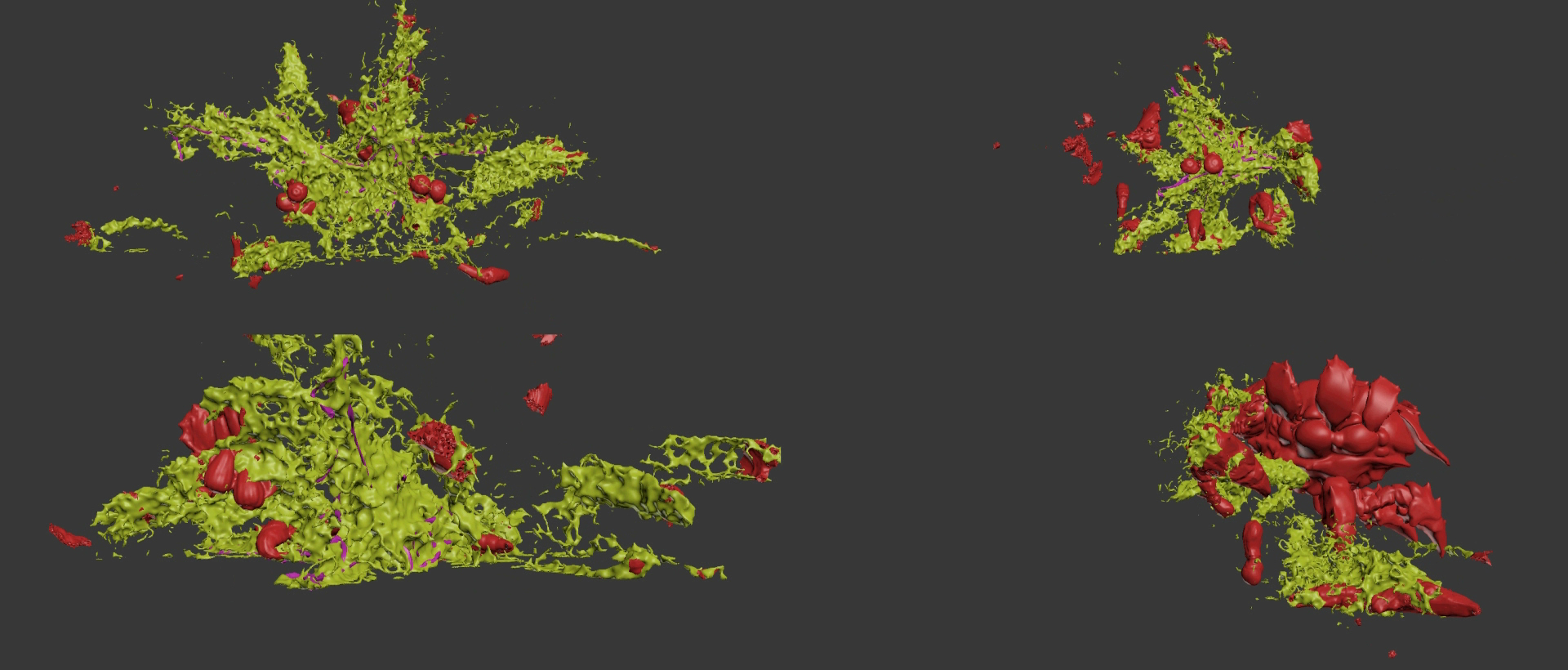
A final step involved the setting up of an emitter for the fluid simulation. Here, artists painted emission areas around fracture points and then emitted particles at these points based on the velocity of the mesh. “We could then use these particles as an emitter in the Fluid solver,” explains Vickers. “The soft body simulation mesh was converted to a VDB and used as a collision with the fluid. The fluid particles were then meshed and exported back to 3ds Max using Alembic.”
Death by Flamethrower
Part of the destruction of the aliens also involved torching them in a wave of fiery effects. This required not only emitting fire from the mechs but also engulfing the aliens in flames. RealtimeUK again turned to Houdini for a solution.
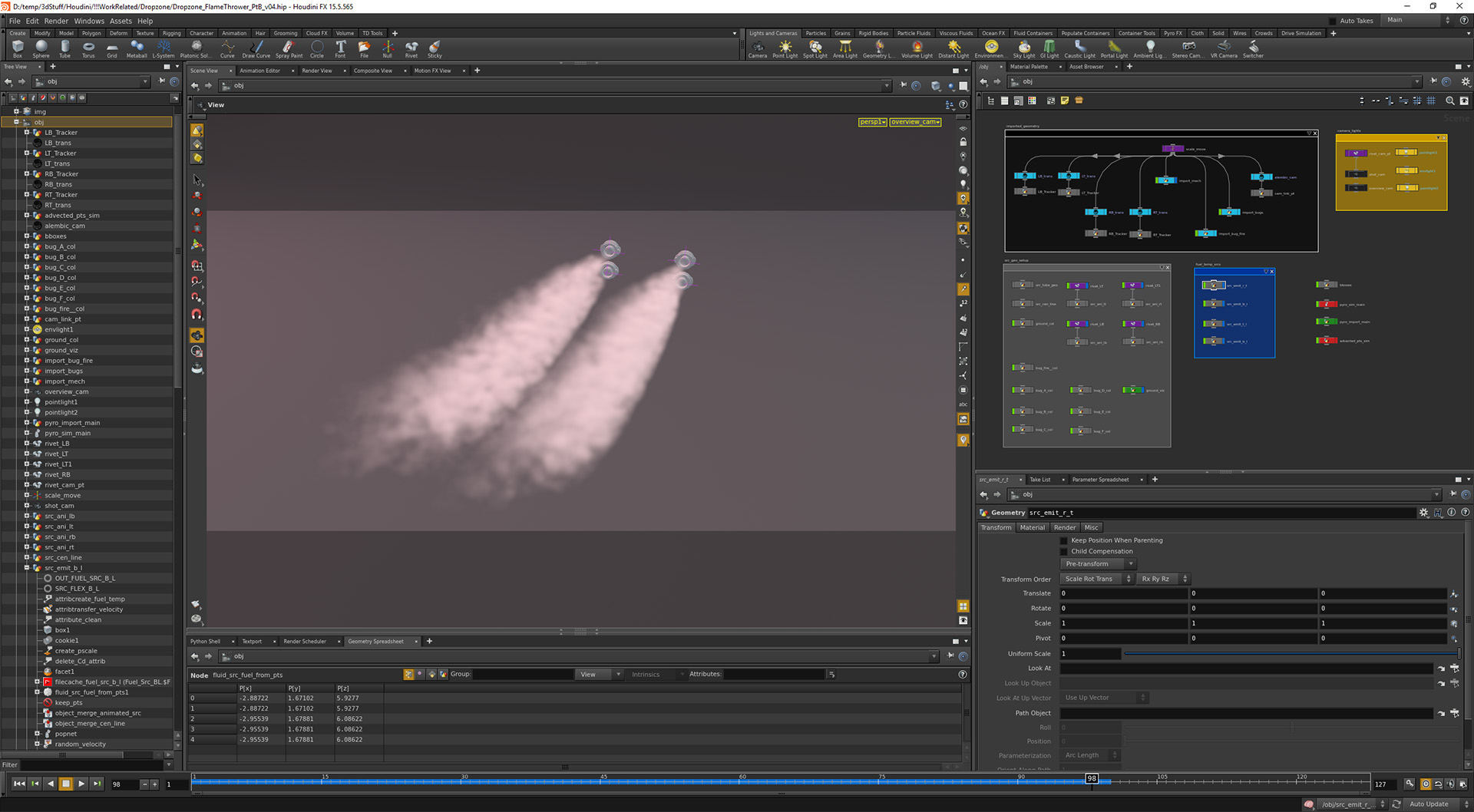
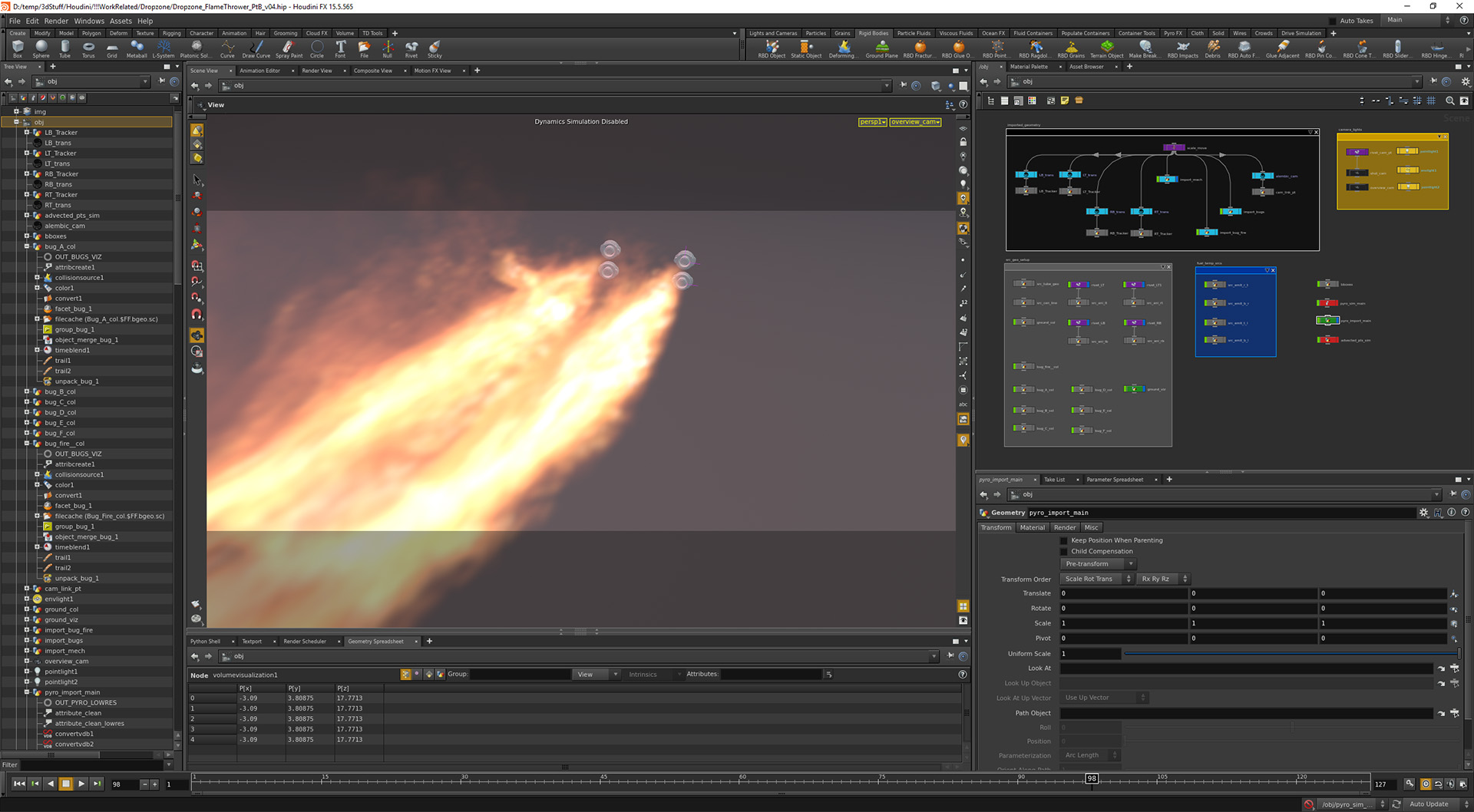
“We used Alembic xforms to get the nozzle animation out of 3ds Max and into Houdini,” outlines Vickers. “Rivets were then linked to these xforms with normal and up attributes. Simple tubes were then linked to the rivets with some animated bend based on the Cd attribute to get the delayed sway we were after as it moves through the scene. Points were then scattered onto these tubes with custom velocities and fed into a pop sim. Next we created fuel, temperature and velocities with a fluid source and cached these out ready for the pyro sim.”
Using the deforming object shelf tool, RealtimeUK generated collision geometry in dops for the relevant bugs and these were also cached out. “In dops,” adds Vickers, “we advected the fuel and used several micro solvers to create the look and detail we were after. This was then exported using VDBs and rendered using V-Ray Volume grids in 3ds Max. Finally, we advected points and exporting them into 3ds Max through Alembic, with velocity and Cd attributes based on age and some randomness thrown in. We were then able to use this Cd attribute in Max to randomise the colour of these points when rendered in V-Ray.”
In one particular shot of a bug catching fire, Houdini was called upon to create the greatest possible impact. First, artists fired points onto the surface of the bug that were being emitted from the flamethrower. Then an attribute transfer was used to transfer the Cd from these points onto the geometry and this then spread out over the bug over a short period of time.

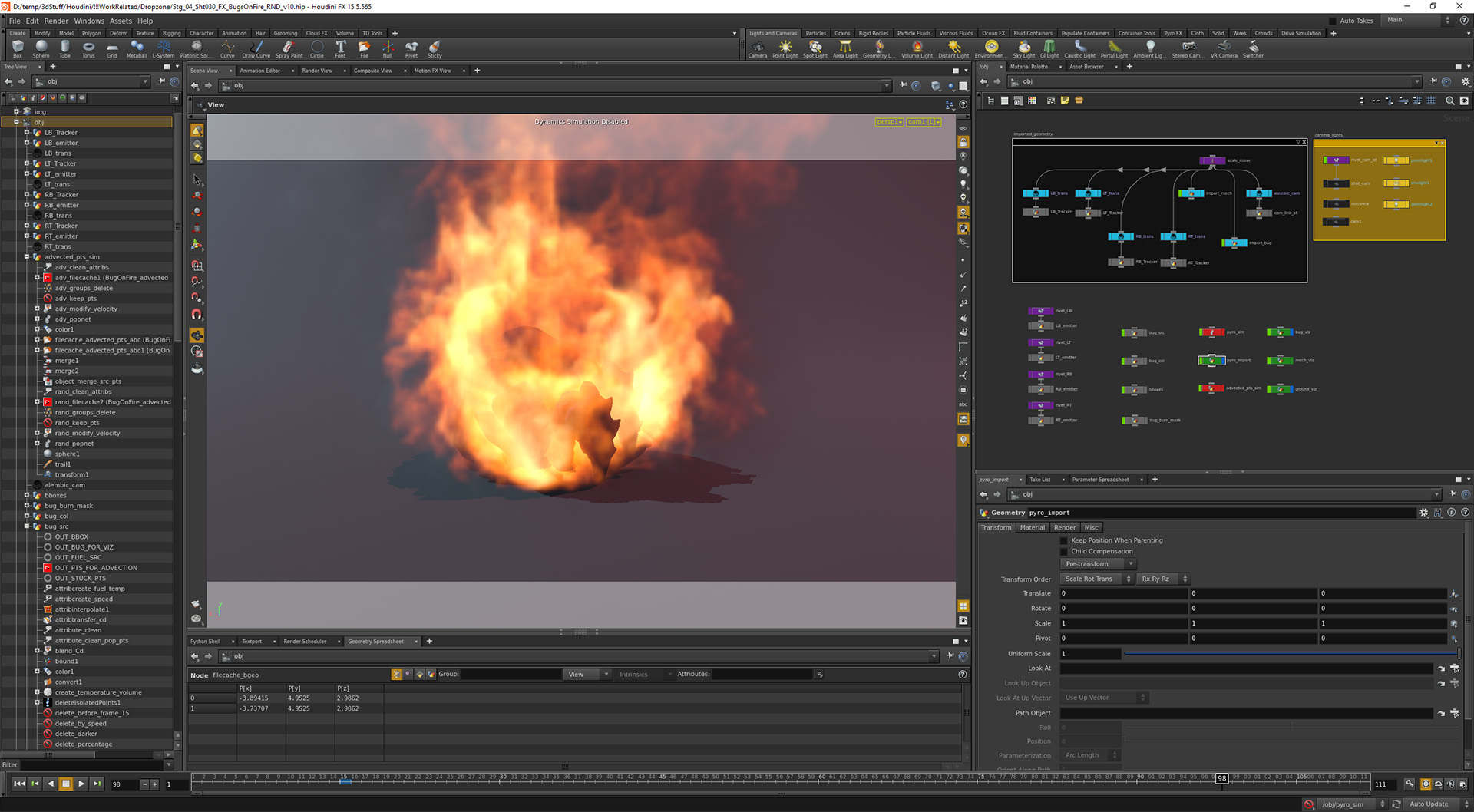
As Collier describes, “a scatter sop was then used to create points with the density attribute set to colour and an Attribute Interpolate was used to link the points to the animation of the bug, custom velocities were then created using the bug’s movement. With everything cached, including a bug collision mesh we again used various micro solvers to get the detail in the flames. Finally, using the same technique as the flamethrower, we advected points using the volume's velocity and rendered the volume and points in 3ds Max.”
Expansive Environments
RealtimeUK’s use of Houdini was not limited to just the aliens. The studio also had to generate the vast environments seen in the trailer. They began with the large land masses in the planets, using World Machine to build the geometry for the ice surface of the moon of Europa.
“It allowed us to generate beautifully detailed landscapes and also allowed us to push the look to be quite alien in some of the formations,” says Bayley. “We would use a base texture generated in World Machine and the matte team would re-project texture detail specific to each shot.”
Houdini then came into play for the atmospheres and clouds in the environments. The software’s cloud tools and custom noise operators were used here to add detail and define shapes. Once volumes were made they were exported as VDBs which were then loaded in V-Ray as volume grids and previewed in the 3ds Max viewport.
The viewport approach allowed artists “to easily position the clouds around the environment,” states Vickers. “One shot also had a ship traveling through the clouds, so we took the volume back into Houdini and used Pyro to simulate velocity based collisions between the volume and the ship. The ship animation was imported into Houdini using Alembic.”
Dropzone Dynamics
The two-minute trailer is an intense collection of imagery, and one that the RealtimeUK team say was greatly helped made possible with Houdini. The studio has amp’ed up its use of the toolset in several recent projects, and this trailer saw an even wider use of Houdini adopted. “Having Houdini on this job allowed us to take advantage of its powerful soft body tools, volume tools and particle and pyro FX,” says Collier. “This helped us push the quality and increase the detail of our FX to a higher level. We are always trying to create bigger and better FX, and Houdini helps us achieve this.”
コメント
Please log in to leave a comment.